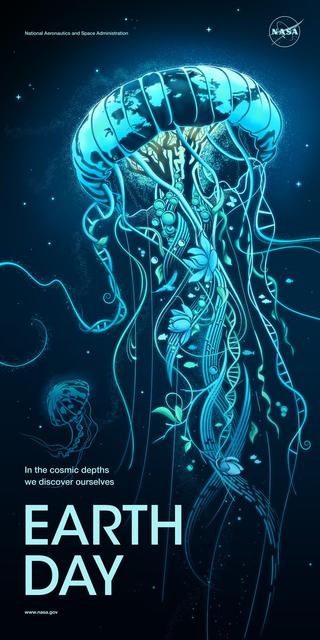 |
| Earth Day ~ NASA |
History of Earth Day:
The inception of Earth Day can be traced back to 1970 when a U.S. senator named Gaylord Nelson witnessed the devastating effects of a massive oil spill in Santa Barbara, California. Motivated by this environmental catastrophe, Nelson sought to harness the energy of the emerging environmental movement to raise awareness about environmental issues. On April 22, 1970, the first Earth Day was celebrated, with millions participating in rallies, marches, and educational events across the United States.
Why We Celebrate Earth Day:
Earth Day poignantly reminds us of the urgent need to address environmental issues such as climate change, pollution, deforestation, and biodiversity loss. It's a day to reflect on the impact of human activities on the planet and recommit to sustainable practices that preserve and protect our environment. Coming together on Earth Day demonstrates our collective responsibility to safeguard the Earth for current and future generations.
Importance of Earth Day:
The significance of Earth Day cannot be overstated. It serves as an annual reminder of the interconnectedness of all life on Earth and the importance of living in harmony with nature. It allows individuals, communities, and governments to take meaningful action to address pressing environmental challenges and work towards a more sustainable future.
Easy Ways to Make a Difference:
While the scale of environmental problems may seem daunting, every individual has the power to make a positive impact. Here are some easy things you can do to help leave the planet in better condition:
Reduce, Reuse, Recycle: Practice the three Rs to minimize waste and conserve resources. Reduce consumption, reuse items whenever possible, and recycle materials like paper, plastic, glass, and metal.
Conserve Energy: Turn off lights and appliances when not in use, use energy-efficient light bulbs, and consider investing in renewable energy sources such as solar or wind power.
Cut Back on Single-Use Plastics: Avoid single-use plastics such as straws, water bottles, and shopping bags. Opt for reusable alternatives or choose products with minimal packaging.
Support Sustainable Practices: Choose products and companies that prioritize sustainability and environmentally friendly practices. When purchasing, look for certifications such as Fair Trade, USDA Organic, or Forest Stewardship Council (FSC).
Get Involved in Community Initiatives: Join local environmental groups, participate in clean-up efforts, and support initiatives that promote conservation and environmental education in your community.
Conclusion:
Earth Day is not just a one-day event; it's a catalyst for ongoing action and change. By raising awareness, advocating for policies that protect the environment, and adopting sustainable practices in our daily lives, we can all contribute to a healthier, more resilient planet. Let's celebrate Earth Day not just on April 22nd but every day by working together to create a more sustainable future for all.





